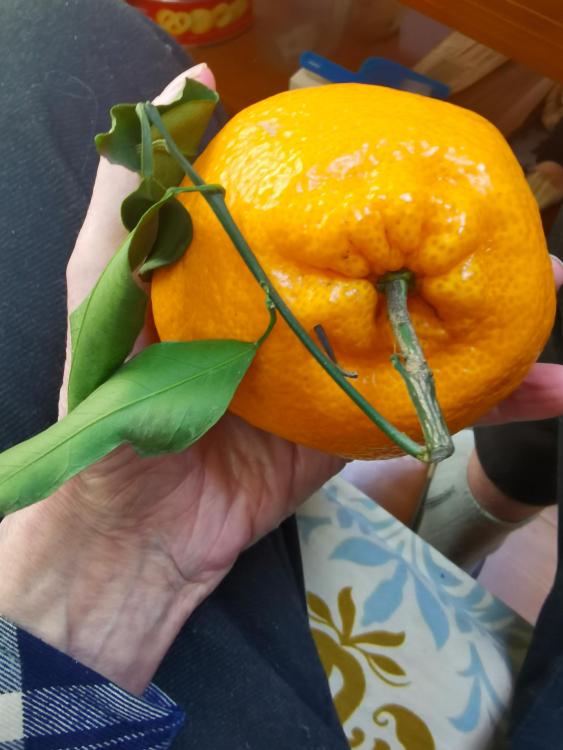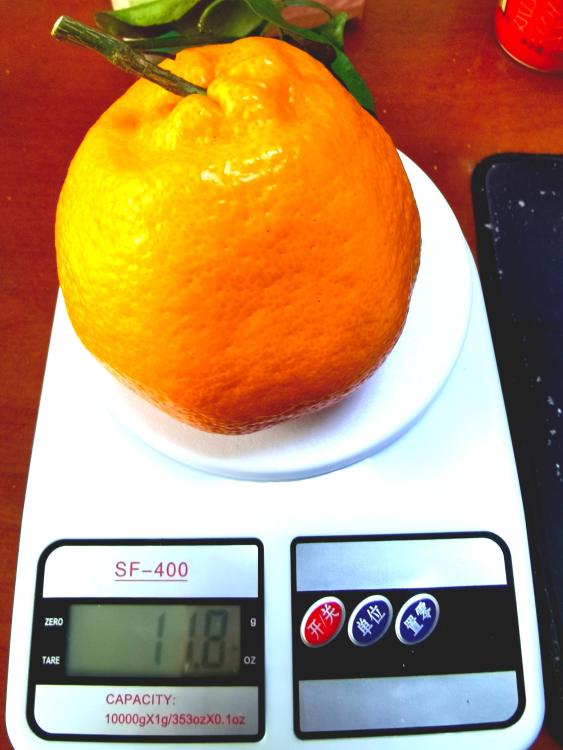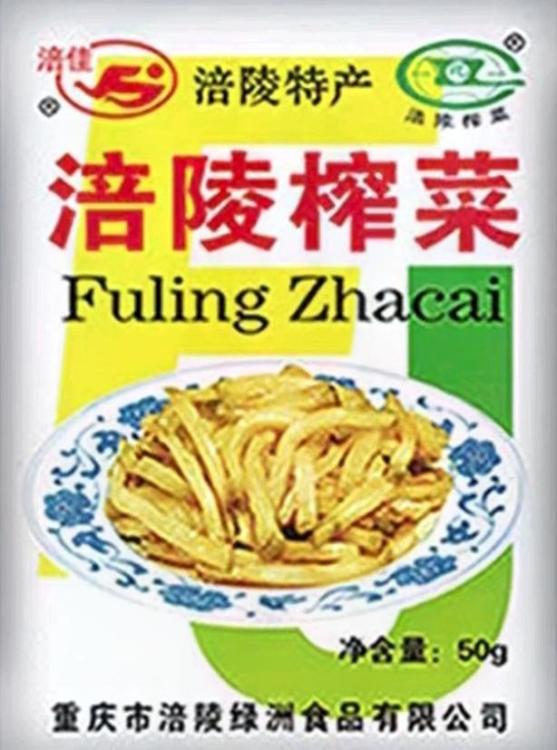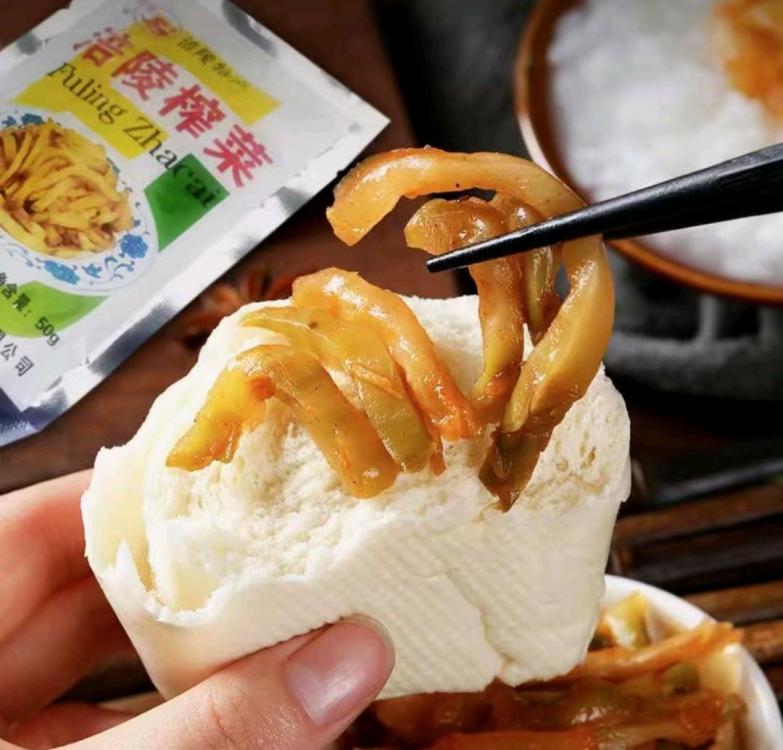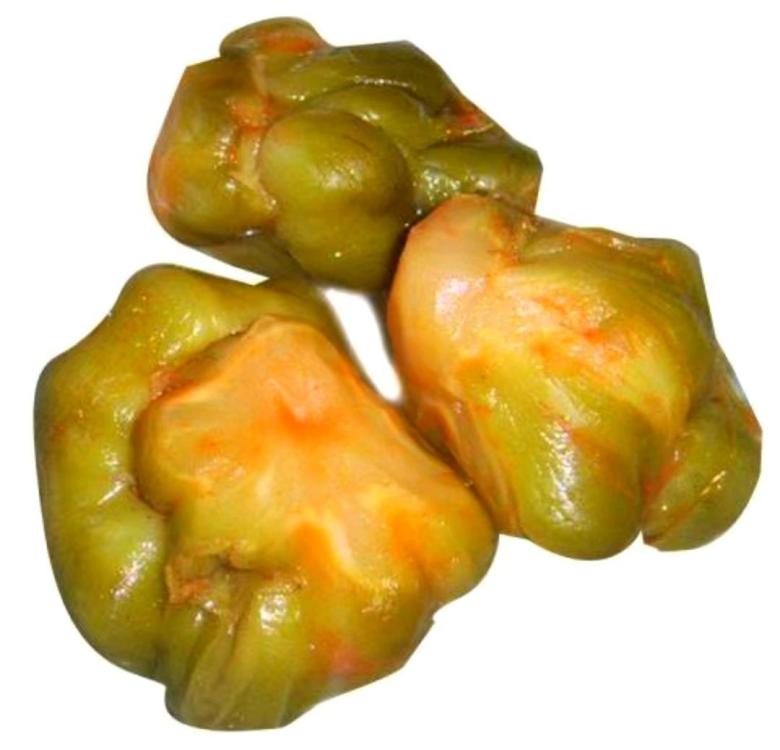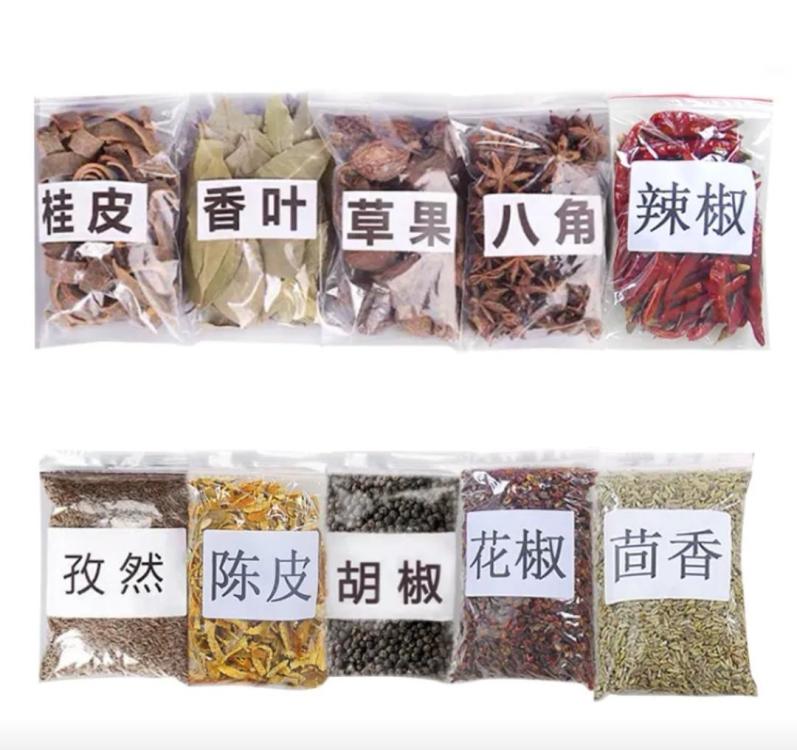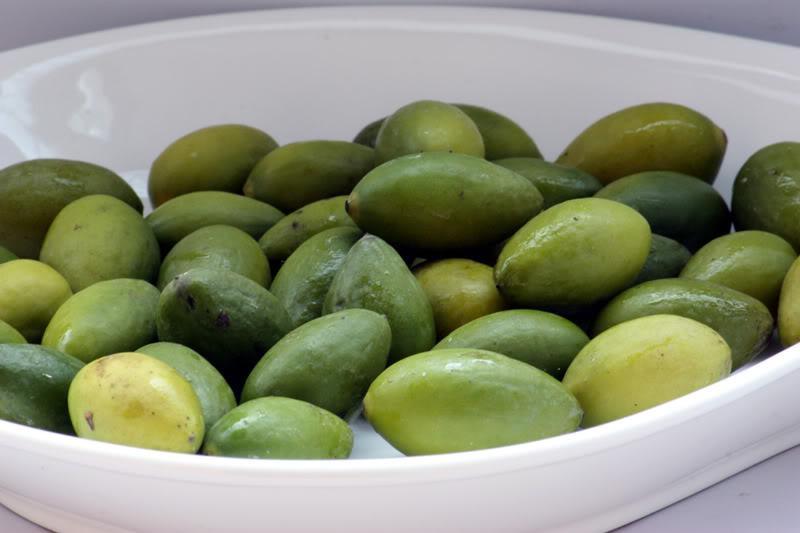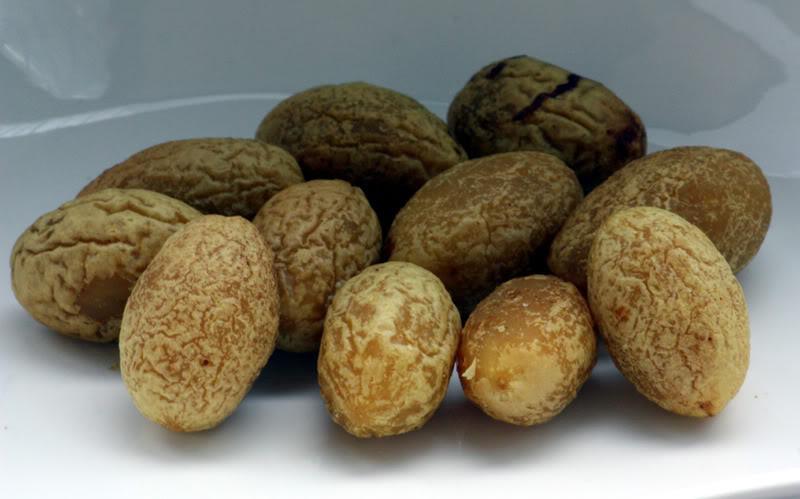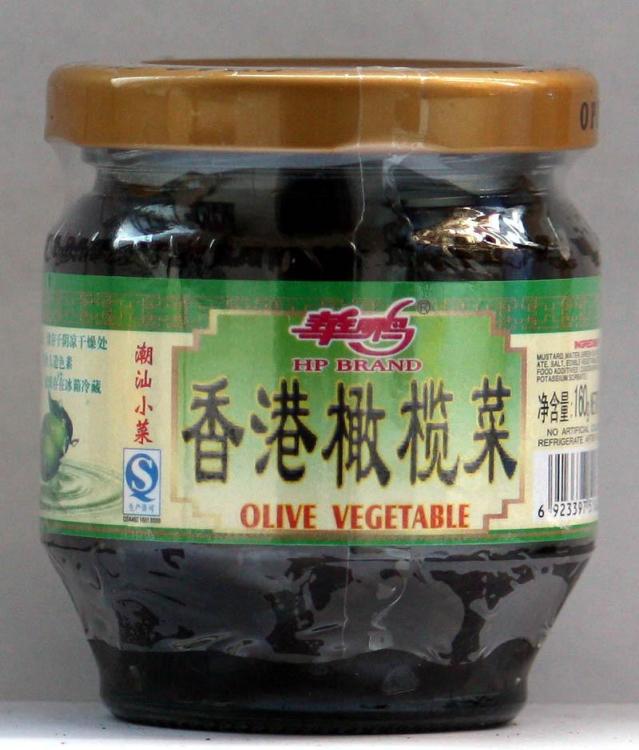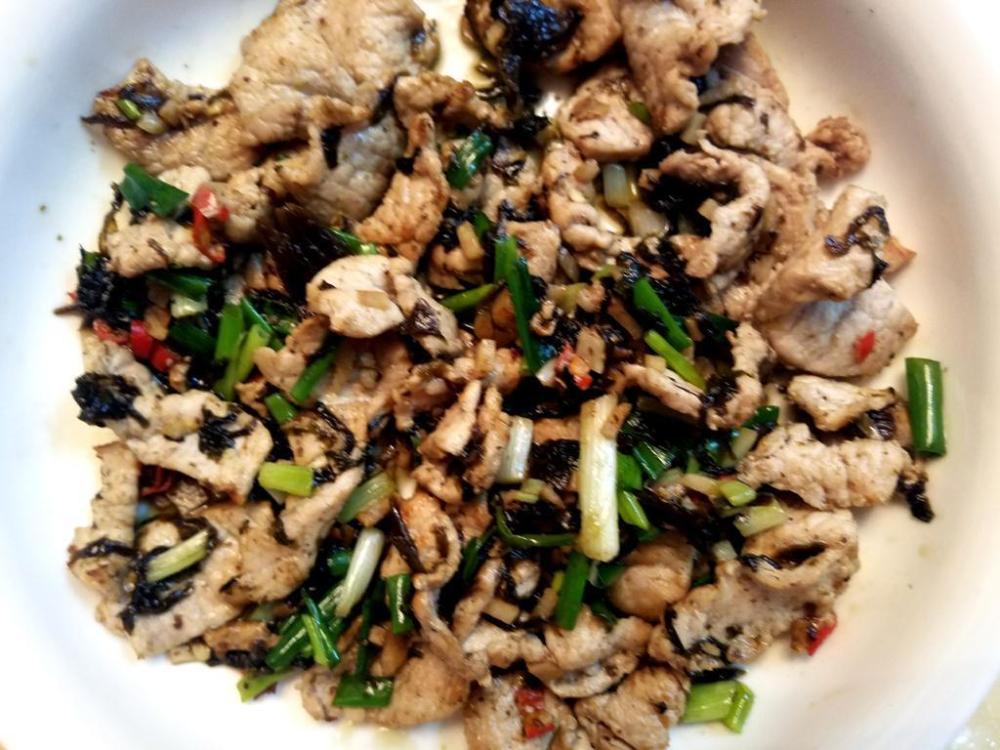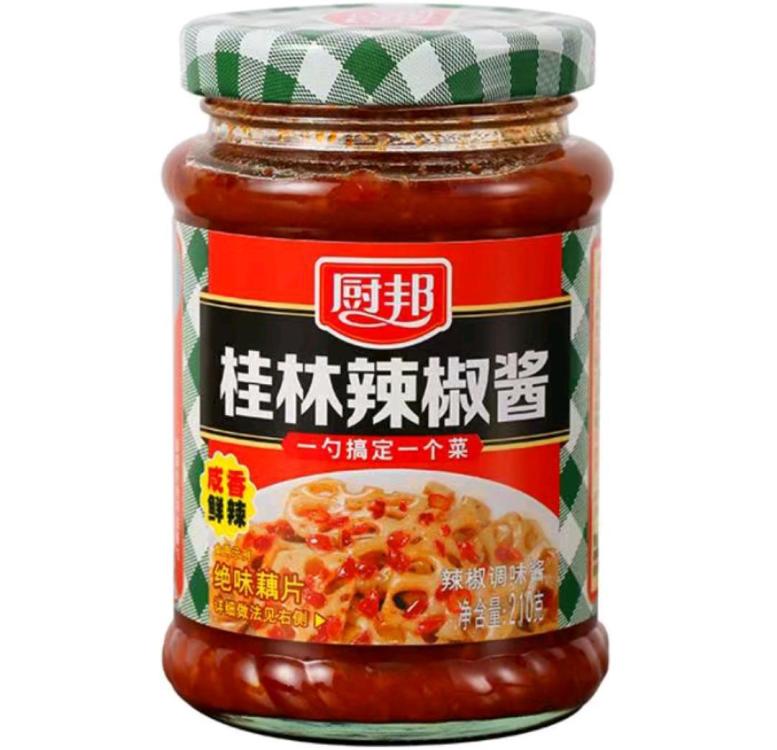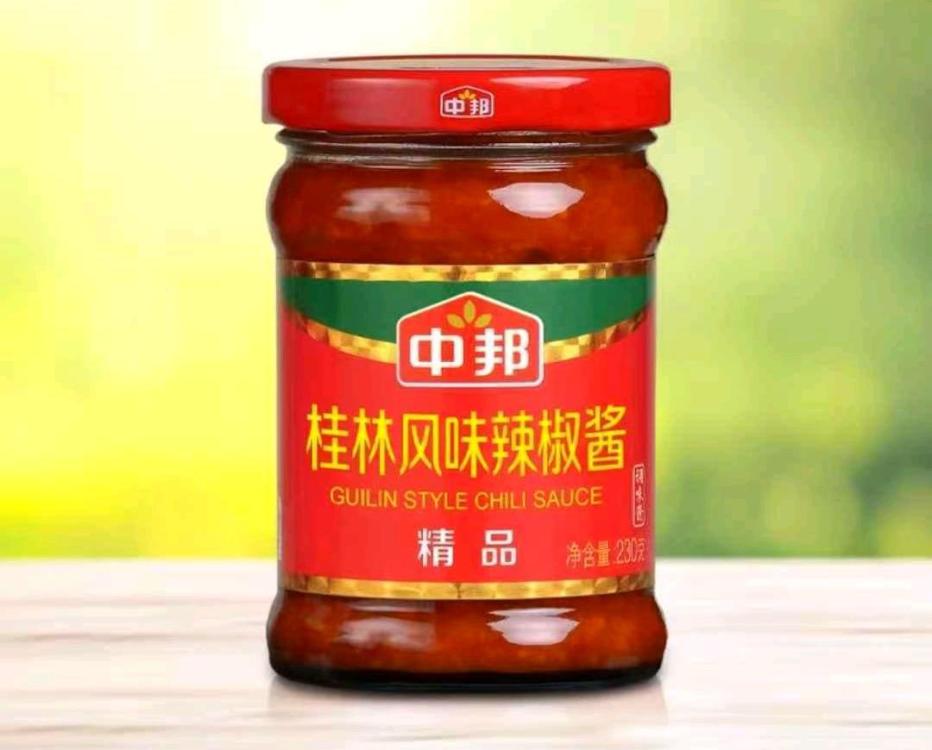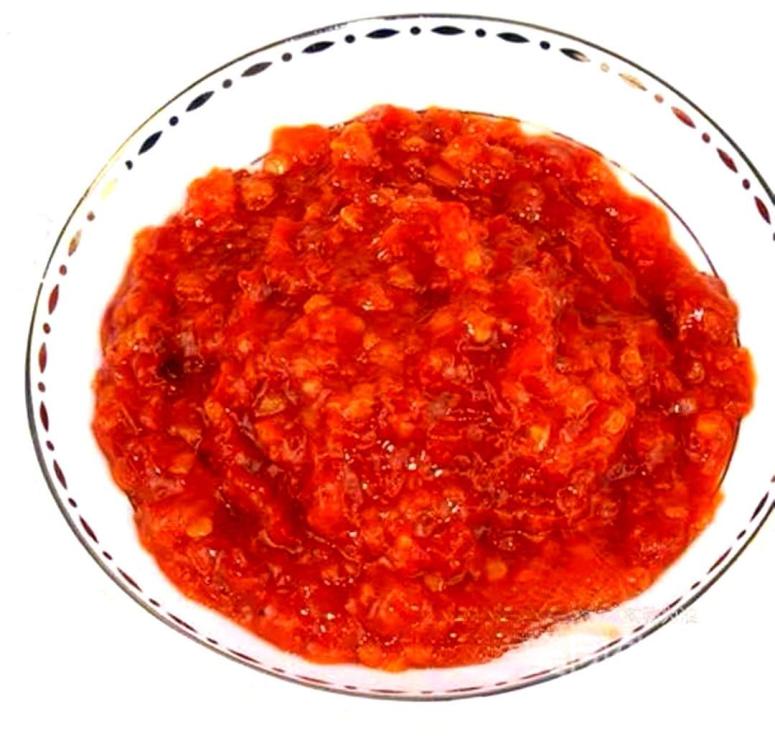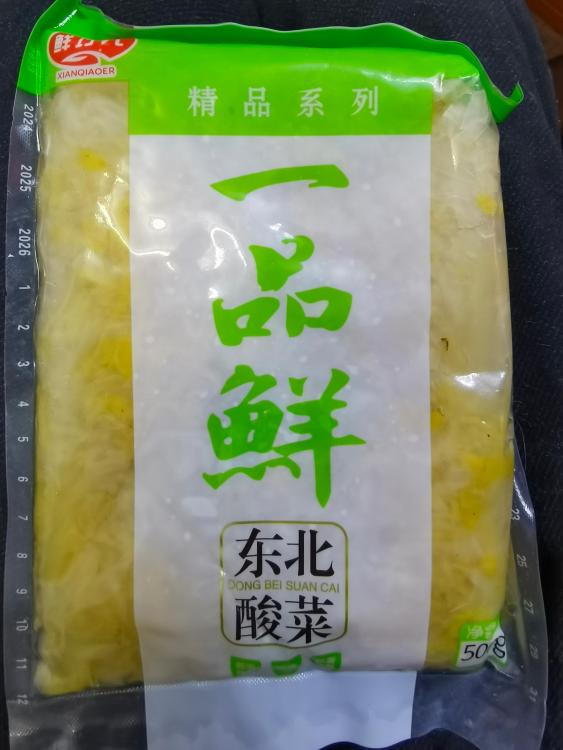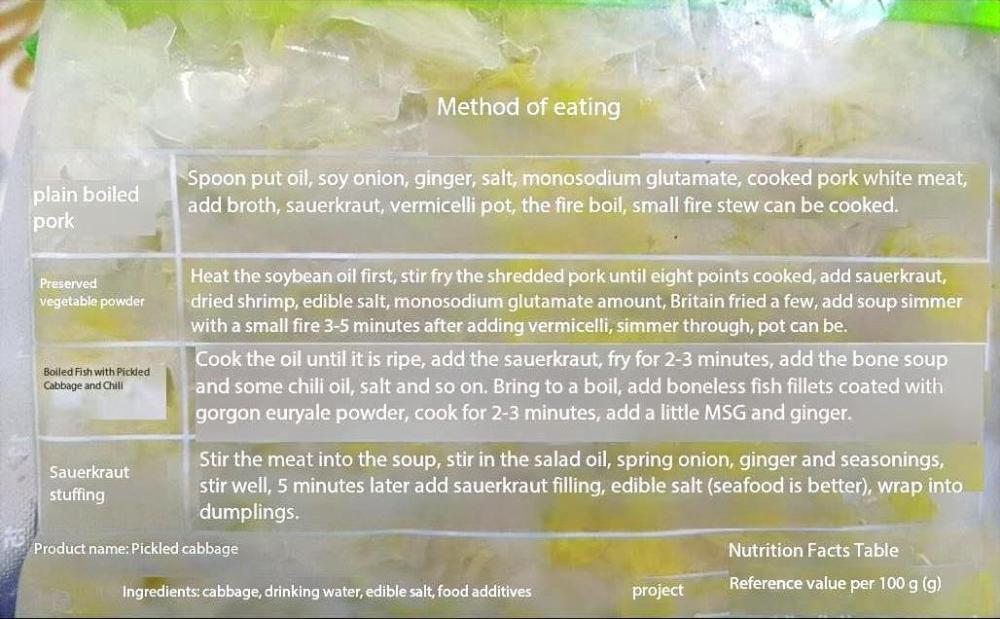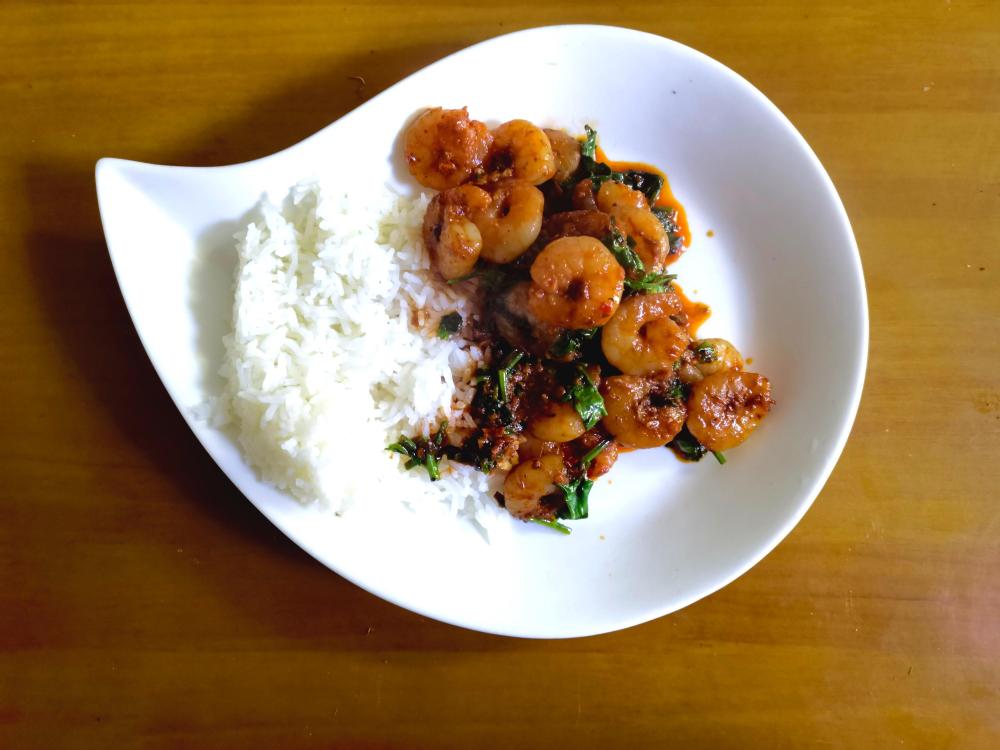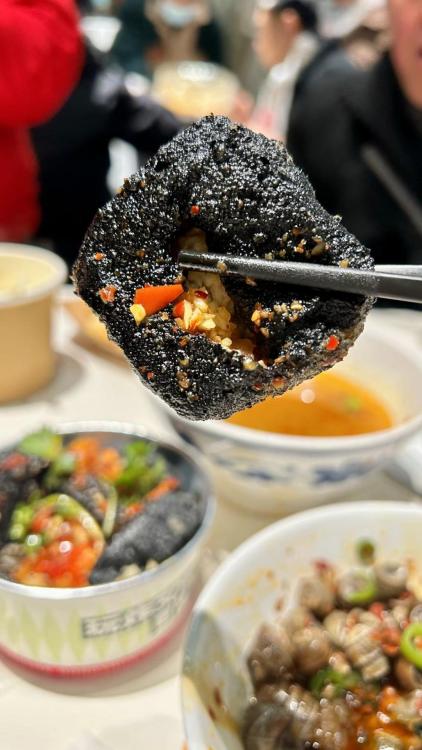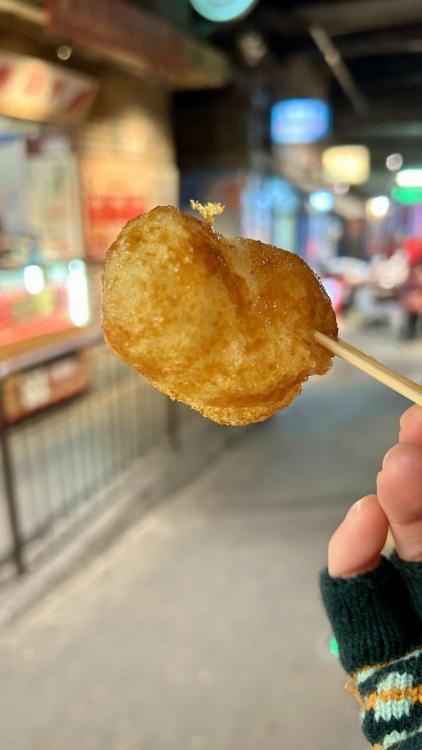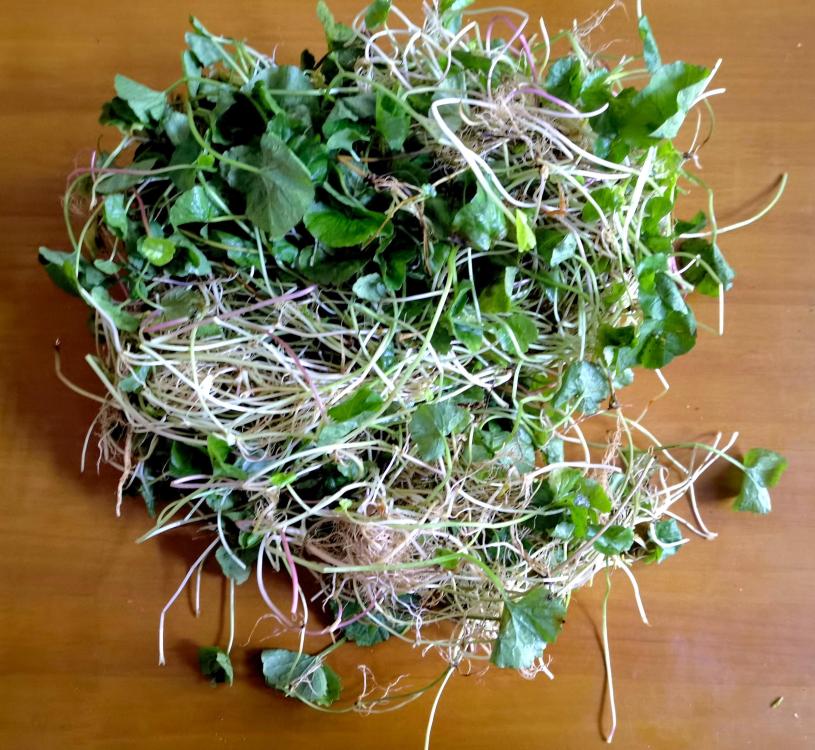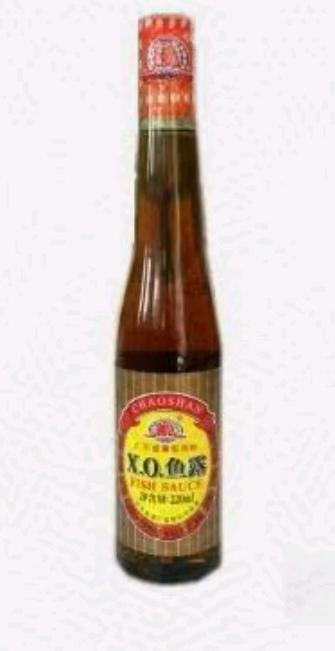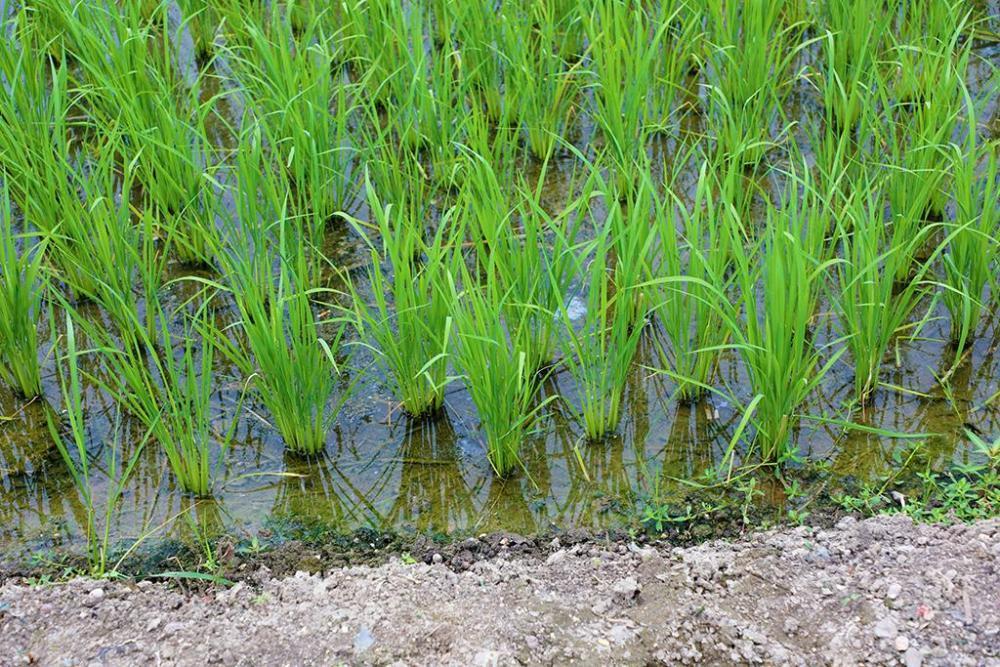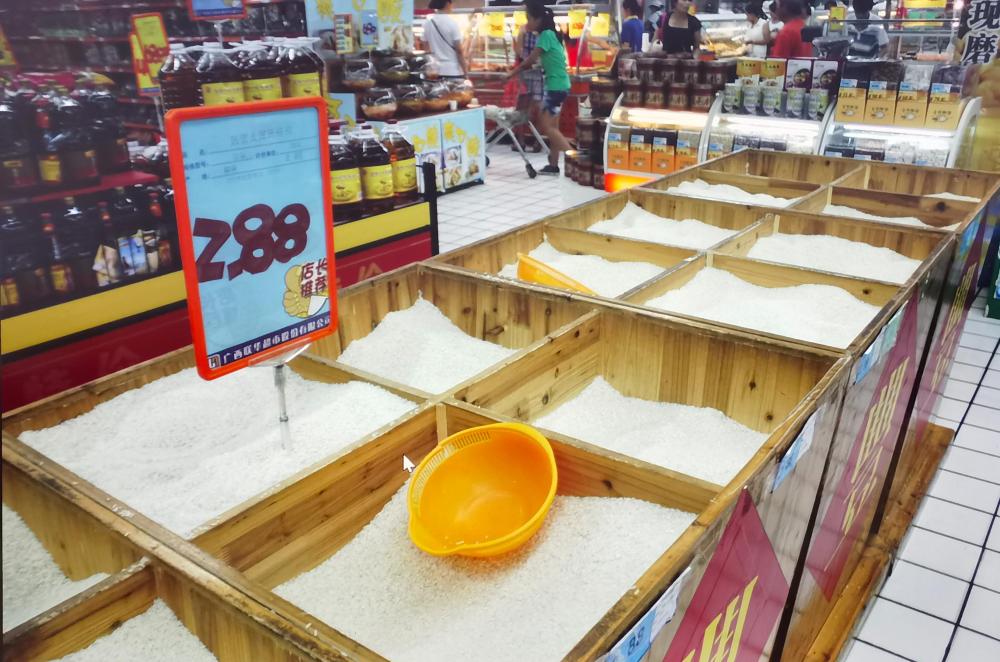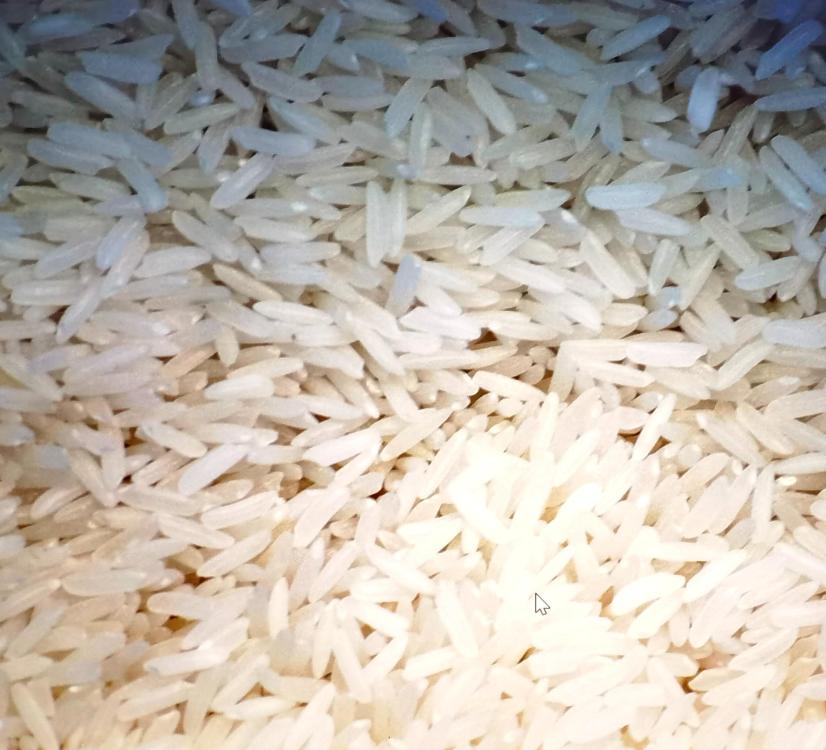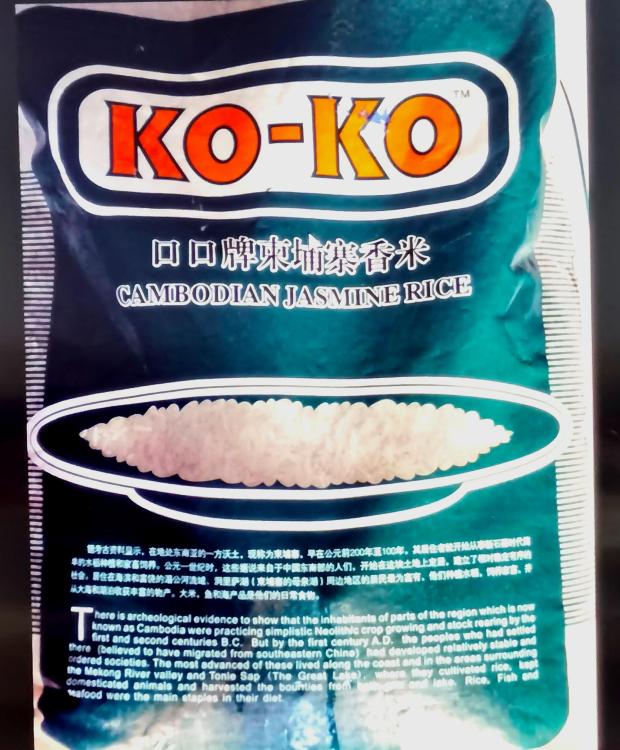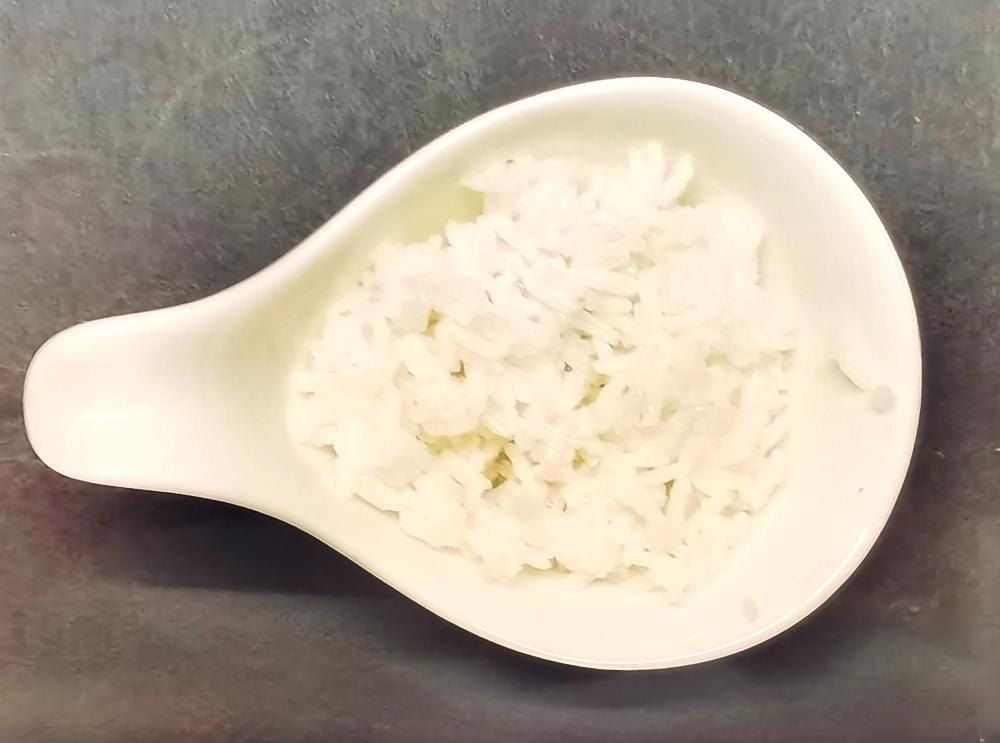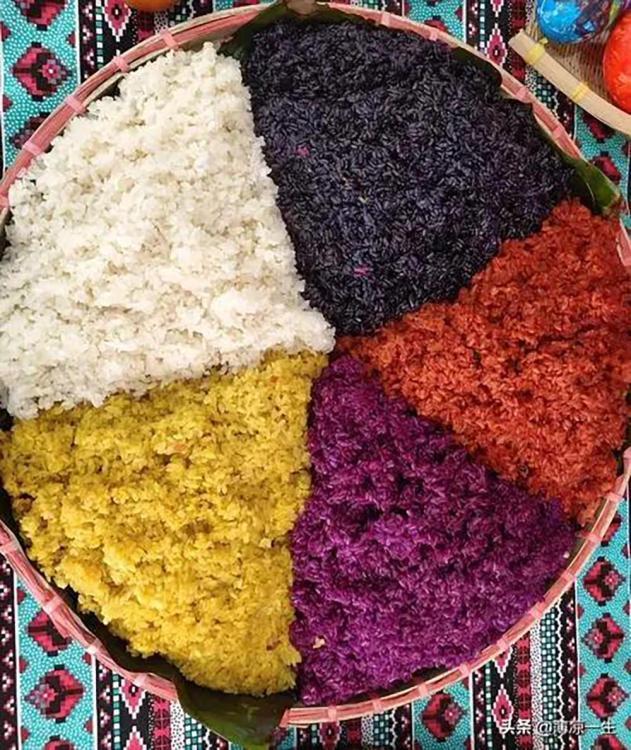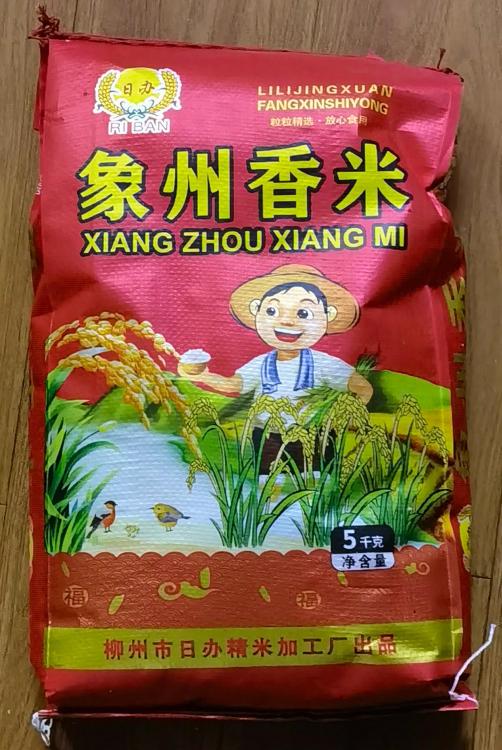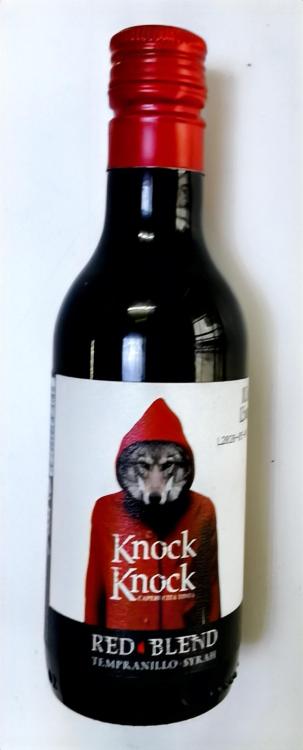-
Posts
16,751 -
Joined
-
Last visited
Content Type
Profiles
Forums
Store
Help Articles
Everything posted by liuzhou
-
I don't know. I didn't go in the store. I never do.
-
Today, I bought more of the 耙耙柑 (pá pá gān) giant tangerines I mentioned up the page. They're getting bigger! 12 oz each. That's what I call a tangerine!
-

A pictorial guide to Chinese cooking ingredients
liuzhou replied to a topic in China: Cooking & Baking
榨菜 (zhà cài, literally 'pressed vegetable'), hot pickled mustard tubers is a staple of Sichuan cuisine. The best is considered to be from 涪陵 (fú líng), Fuling suburbs of Chongqing municipality which was until 1997 part of Sichuan. Sold in jars but also in these single serving packets it is added to congee, used in stir fries and added to soup. Or just eaten straight from the container with steamed bread or buns. The mustard is crunchy while remaining tender and has an aroma most people find appealing. Being Sichuanese it is also spicy, but not overly so. Unsliced zhacai According to a 2019 article in China Daily, over 60,000 local farmover in Fuling are involved in raising stem mustard. "In 2017, 1.6 million tons of stem mustard were produced, which yielded over 9 billion yuan ($1.3 billion) in pickle products." Zhacai is produced in other parts of Sichuan but is thought to be inferior. Non-Fuling Zhacai Fuling zhacai (涪陵榨菜 - fú líng zhà cài) is exported to over 50 countries. Look out for its distinctive packaging at Asian markets. -
Haha. It's just a sponge with currants.
-

A pictorial guide to Chinese cooking ingredients
liuzhou replied to a topic in China: Cooking & Baking
According to one local store these are the ten most common spices used in Chinese cooking. I disagree with one. They are top row, left to right: 桂皮 (guì pí), cassia bark; S: 香叶; T: 香葉 (xiāng yè), bay leaf; 草果 (cǎo guǒ), black cardamom; 八角 (bā jiǎo), star anise; 辣椒 (là jiāo), chilli. Bottom row: 孜然 (zī rán), cumin; S: 陈皮; T:陳皮 (chén pí), tangerine peel; 胡椒 (hú jiāo), pepper; 花椒 (huā jiāo), Sichuan peppercorn; 茴香 (huí xiāng), fennel seed. Where I disagree with them is that they show black pepper. White pepper is much more common. -

A pictorial guide to Chinese cooking ingredients
liuzhou replied to a topic in China: Cooking & Baking
I reckon there are olives in my DNA. I love 'em. The first food my granddaughter expressed a pre-vocal liking for was olives. Why, oh why did I move to China, a veritable olive desert? I can buy cheap, dyed low quality Spanish olives, that the Spanish don't want, in jars or cans but I have standards! So, I was delighted to learn early on that China grows olives, mainly in Fujian province. A delight that was soon shattered. Chinese olives ain't olives! Not even vaguely related and certainly not even close to tasting like olives. Chinese olives, S: 橄榄; T: 橄欖 (Mandarin: gǎn lǎn; Cantonese: gaam3 laam2) are Canarium album, whereas European olives are Olea europaea and ne'er the twain shall meet. Chinese 'olives' Chinese olives are usually pickled in vinegar or salted and eaten as a snack food. They are also often candied. Occasionally, they are added to hotpots or soups. Bitter, astringent and to my tastes, unpleasant. Salted Chinese 'olives' What I don't mind however is S: 橄榄菜; T: 橄欖菜 (gǎn lǎn cǎi), olive vegetable. This is processed from the offending objects and made into a paste sold in jars labeled 'olive vegetable'. It makes an umami rich addition to stir fries. I sometimes add a little to fried rice or congee. 'Olive vegetable' It is particularly popular and associated with Chaozhou* cuisine, a sub-branch of Cantonese cuisine with a strong Fujian influence. Popular in Hong Kong, too. Stir fried pork with olive vegetable * aka Chiu Chau, Ch'ao Chou, Teochiu, or Teochow. -
Is it the food or the word that offends?
-
I can't answer for @Dejah, but breadcrumbs in batter? Fish is either breaded or battered; I've never encountered breadcrumbs in a batter. I always use simple but classic beer batter with fish. Flour, beer and maybe some bicarb. Seasoning. The end.
-
Most of these are about the food; not the word, which is what I was asking about.
-
Absolutely. 'Smoothie' is almost up there with 'yummy' as the most childish, ugly word there is.
-

A pictorial guide to Chinese cooking ingredients
liuzhou replied to a topic in China: Cooking & Baking
China has literally hundreds of commercially produced hot sauces in addition to those made in-house in restaurants or at home. One of the best known is S: 桂林辣椒酱; T: 桂林辣椒醬 (guì lín là jiāo jiàng) Guilin Chilli Sauce. Its popularity, I suspect, is more to do with Guilin being one of China's top tourist destinations than to do with any inherent superiority in the product. It's an OK hot sauce but there are better. See the hot sauce topic here for hot sauces around the world, including China. Beware: Guilin's popularity has lead to a number of copycat products such as this. Note that it says 桂林风味辣椒酱. That extra 风味 (fēng wèi) dropped casually into the name means 'distinctive flavour or distinctive style', and is only included for legal reasons. The sauce is made in Zhongshan, a city in Guangdong province, far from Guilin. Despite being a knock off, it is more expensive than the real thing. Caveat emptor, as Chairman Mao said. I'm told Guilin 'style' sauce is available in the US from Amazon. The real stuff may be available in Asian markets. -

A pictorial guide to Chinese cooking ingredients
liuzhou replied to a topic in China: Cooking & Baking
Time for something actually available. This is S: 东北酸菜; 东北 T: 東北酸菜 (dōng běi suān cài). Dongbei (literally east-north) refers to the provinces of Heilongjiang, Jilin and Liaoning. Historically, this was known as Manchuria, a name now avoided as it reminds people of Japan's brutal occupation of China from 1931 to 1945. 酸菜 (酸菜) is pickled vegetables, particularly Chinese cabbage, as here. It is often translated as 'sauerkraut' which it closely resembles. Ingredients listed are cabbage, water, salt and preservatives. (sodium dehydroacetate and potassium sorbate). The sauerkraut is used in a number of dishes including the following, translated by my cell phone app, as I'm too lazy and these translations more 'interesting' than mine! It can also be eaten straight from the pack. I add it to congee. Expect to pay around $1 for 500 grams here in China. -
Yes. I've seen it advertised in the window of the local Starbuck's Reserve and I trust myself. It's been widely reported in the press, too. Why would you be surprised that an advertising image doesn't look real? I'd be surprised if it did look real.
-
Sichuan style spicy shrimp. Shrimp, garlic, ginger, 辣豆瓣酱 (là dòu bàn jiàng), coriander leaf / cilantro, Sichuan peppercorn oil, lime juice (not traditional). Rice.
-
长沙臭豆腐 (cháng shā chòu dòu fu), Changsha stinky tofu. 糖油粑粑 (táng yóu bā bā) a sweet snack made from glutinous rice, sugar and honey, common in Changsha, capital of Hunan province. Street food.
-
Here's a thunderous vegetable for you. Lei Gong 雷公 (léi gōng) is the Chinese name of the God of Thunder. For reasons which escape me he has this innocuous looking herb / vegetable named in his honour. Lei Gong - image baike-sogou.com Centella asiatica, 雷公根 (léi gōng gēn), Lei Gong root, is also known as tiger grass , cica, or gotu kola (Indonesian). It is used in TCM for various alleged crimes against healthiness and, of course, the wellness fakirs have jumped on the bandwagon with their ludicrous claims, this time touting it as a skincare miracle. For sensible people, it's just another bit of dinner, being used in hotpot and soups etc.
-
It's not a problem I've had but I'm certain they're not going to soften. This website may help you deal with them in other ways. https://www.guavafacts.com/how-to-eat-guava-seeds/
-

A pictorial guide to Chinese cooking ingredients
liuzhou replied to a topic in China: Cooking & Baking
Someone, somewhere, some time ago asked me about fish sauce usage in China. For years, the only fish sauce I could buy was Thai (น้ำปลา - nam pla) or, occasionally Vietnamese (nước chắm). I even found a Chinese made Korean type (액젓 - aekjeot). But no Chinese sauce. I had heard rumours of S: 鱼露; T:魚露 (yú lù, literally 'fish dew', a fish sauce found in Chiu Chau, Ch'ao Chou, Chaozhou, Teochiu, or Teochow cuisine depending on your spelling preference. This is the cuisine found around 潮州 (cháo zhōu) Chaozhou, a city in Guangdong province with its own distinct cuisine. This elusive sauce is difficult to find even in China, never mind overseas, but never one to give up, I finally tracked down one supplier in town. Image from online shopping listing. Of course, they are out of stock! They have promised to call me when they restock. If. -
I've eaten Dongpo pork many times. Had Starbuck's 'coffee' once.
-
Not to make of fun of anyone who suffers from a real phobia, but out of genuine interest, is there any food (cuisine, dish or ingredient etc) that you really wouldn't eat solely because of an irrational reaction to the name, not the concept. The word; not the food. I have to confess muskellunge doesn't sound like something I'd want with my chips for supper.
-
I'm not one for the curry or vinegar with my fish and chips, but your fish looks great. Never had pickerel, though. Interesting.
-

A pictorial guide to Chinese cooking ingredients
liuzhou replied to a topic in China: Cooking & Baking
Yes, you're not expected to recite the menu of the last 24 hours any more than asking "how are you?" in the west requires you to detail your symptoms of imminent demise. A simple "吃了 (chī le)" meaning "eaten" suffices (whether you have or not). -

A pictorial guide to Chinese cooking ingredients
liuzhou replied to a topic in China: Cooking & Baking
Yes. My neighbour said it to me this morning. Very common. 吃饭了吗? (chī fàn le ma?) The translation is simply "Have you eaten?" -

A pictorial guide to Chinese cooking ingredients
liuzhou replied to a topic in China: Cooking & Baking
Not surprisingly I suspect, it behoves me to deal with Oryza sativa. After all, it originated here and remains the staple food for millions, not only in China but worldwide. Over 50% of the world's population rely on it. Two main sub-species are grown and eaten daily across much, but not all of China. These two are O. sativa subsp. indica, and O. sativa subsp. japonica. Basically, these are respectively long and short grain rices, although there are exceptions. The former is the most common. The importance of rice is captured in the phrase S: 铁饭碗; T: 鐵飯碗 (tiě fàn wǎn), literally 'iron rice bowl' but meaning 'secure employment for life' as promised under Mao's regime. At this stage, I want to emphasise that rice is not a staple everywhere in China. Northern China's staple is wheat, most often consumed in the form of wheaten noodles and pasta-like dumplings or as buns/breads. Rice is the staple of the south where it mostly grows. Also, most noodles in the south are rice noodles. Of course, both rice and wheat products are available all over but, in terms of staples, there is a clear north-south divide. Uncooked, husked rice as sold in supermarkets, grocery stores and markets is known in Chinese as 大米 (dà mǐ). Cooked rice in a restaurant or at home is S: 米饭; T: 米飯 (mǐ fàn, literally 'rice food'). Most of the ethnic minorities of southern China favour glutinous rice 糯米 (nuò mǐ), O. sativa subsp. glutinosa or a glutinous strain of O. sativa japonica. This is the sticky rice also found in South-East Asia. It comes in regular form and as black rice (黑糯米 - hēi nuò mǐ), sometimes called 'forbidden rice' as it was once reserved or the Emperor's court. 五色糯米饭 (wǔ sè nuò mǐ fàn) – 5-colour glutinous rice - is a favourite at festivals. Some of the rice is coloured using vegetable dyes; some are natural. Red rice 红米 (hóng mǐ) is an indica type with a nutty flavour. Do not confuse this with red yeast rice, which is regular rice infected with Monascus Purpureus yeast. This yeast rice is used to make red rice vinegar. 红米7 Brown rice 糙米 (cāo mǐ) is available but rarely used at the dinner table. It tends to be used more for porridge (粥 - zhōu), often mixed with other grains. Most white rice is sold unbranded in supermarkets and comes in these bins at various prices and quality levels. It is also sold in 5 or 10 kg packs like this. I can only suggest you buy the best you can afford and experiment until you find what you like. I find it tends to be a very personal choice. I currently have three types of white long grain rice. A mid price type I use for congee. A local rice called cat's tooth rice due to the length of its grains. Cat's Tooth Rice And finally a Cambodian Jasmine rice for dinner. One website, supposedly run by a Chinese native, recommends basmati rice for fried rice, blissfully unaware that basmati is virtually unobtainable in China. A tiny amount is imported from Pakistan but never appears here. Like my neighbours, I cook my rice in a S:电饭煲; T. 電飯煲 (diàn fàn bāo) electric rice cooker, although I do congee in my slow cooker for convenience. I hope no one is feeling S; 茶饭不思; T: 茶飯不思 (chá fàn bù sī) an idiom literally meaning 'no thought for tea or rice' but in fact referring to being melancholic and suffering lack of appetite. -
I have a few mini-bottles of vino collapso for cooking. I don't mean I cook with them but that they are intended for cooking. They were gifts.


